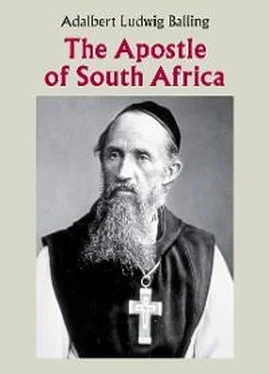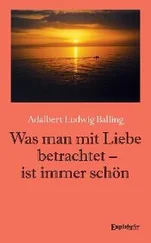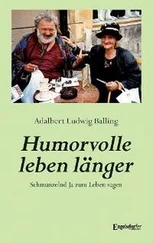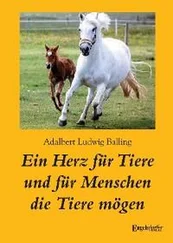Why, we may ask today, was there so much reluctance to introduce a process of beatification for him? Was it because we expected him to be perfect before he died? Or was it because a process could be troublesome, or we, his sons and daughters, did not wish to be challenged by his saintliness?
The truth is that while a saint is still in-the-making, as it were, he/she is neither complete nor perfect. Candidates for sainthood are peoplein-progress like we are, pilgrims in via – on the way. Sinners who endeavor to be good, they know their own weakness and are humble about it. They fail but they also get up and try again. They surrender to God’s will and trust in the Holy Spirit’s guidance. Ultimately, God uses them to prove that He is quite capable of writing straight with the crooked lines of their lives, any life.
Dear Reader
It is not possible to sketch the life of Francis Wendelin Pfanner in several volumes, leave alone, in one. Neither can a sketch be produced with a few strokes of the pen. But it is possible, with the help of many strokes, many details, to compose a biographical mosaic – colourful, interesting and informative. This has been my aim in writing this book.
What you hold in hand is not a biography in the strict sense of the word. Why? Because this time I wish to approach the life and work of Abbot Francis Pfanner in a way that differs from my earlier approaches.
The life of “The Apostle of South Africa” may be compared to a colourful tapestry or a checkered quilt, which at times you may find probing and challenging. I hope that thread by thread and patch by patch, a portrait emerges which reflects the true identity and spirit of the extraordinary man Wendelin Francis Pfanner.
My almost exclusive source is a documentary work in four volumes of approximately a thousand pages each. It was compiled by Rev. Timotheus Kempf CMM in the 1970’s and 1980’s for private use by the Mariannhill Fathers, Brothers and Sisters. Its purpose was to enable an investigation into the life of the Founder in view of his eventual beatification and canonization.2 I have kept footnotes and other references to a minimum. My aim is to paint Pfanner’s portrait with the help of episodes, parables, essays, maxims and aphorisms in interview-style, here and there adding a short comment or selected testimony by a contemporary, in order to complete the portrait and make it colourful and attractive.
In short, I would like the reader to enjoy this book and personally meet the Founder of Mariannhill. – Note: “An Adventurer in a Cowl”. (5th ed.) is an abridged version of a biography of the Founder, published by Herder.3
I hope that in the end, the reader will agree with me, that the life of Wendelin Francis Pfanner is indeed many-sided and full of surprises. The direction it took seems improbable in parts; yet the story is very straightforward. The Portuguese proverb “God writes straight with crooked lines” applies to it like no other.
I thank you for your interest and wish you and your loved ones God’s blessing and the protection of his Holy Angels.
Adalbert Ludwig Balling
I.
Langen-Hub near Bregenz
A lifelong Love of Home
Vorarlberg is an ancient cultural landscape. It has been settled since times immemorial. The Rhetians came before the Celts. The Romans, too, left their imprint. Bregenz (Brigantium) received its town charter from Emperor Claudius. The Christian religion entered the region on the heels of Roman imperial troops and colonists. Later, much later, with Emperor Constantine’s rise to power and the erection of the diocese of Chur (now Switzerland), Christians felt emboldened to come into the open. Chur was separated from the north Italian archdiocese of Milan and incorporated into the Frankish imperial church. At the beginning of the nineteenth century, Vienna appeared on the map, and Vorarlberg was affiliated by imperial decree, not to Salzburg of greater Austria, but to the Diocese of Brixen in Tyrol.
Vorarlbergers are said to be warm hearted people who love their homeland and the religion of their ancestors, the Catholic religion. At the same time, they are known to be demanding, strict, intransigent and quick to defend themselves when their freedom and rights are contested.
Francis Wendelin Pfanner’s ancestors came from the Alemannic (Swabian) Allgau. He explained the family name “Pfanner” as deriving from “panner”, pan-maker. The family owned a farmstead, Langen-Hub, one of several others on the border with Germany. It was approximately a three-mile walk from the parochial village of Langen and not far from Bregenz, the capital of Vorarlberg.
According to the parish register, Wendelin’s father, Anton Pfanner, was born in 1794 and on 25 October 1822 married the twenty-two-yearold “virtuous maid”, Anna Maria Fink of Weissenhub. They had three sons and two daughters. Johann und his twin-brother Wendelin were born on 20 September 1825 and baptized on the same day at Langen. Godfather to red-haired Wendelin was his paternal uncle, Wendelin Pfanner, then a student of Theology, and his godmother, Magdalena Fink, a maternal aunt. His mother died of childbed fever at the age of twenty-six after giving birth to her fifth child, a girl, who also died!
For six years, the father’s sister Catherine took care of the Pfanner children. Wendelin and his siblings called her “Godle”, dialect for godmother. She was capable and by Abbot Francis’ testimony, a “strict foster mother: industrious, economical, responsible, devout and orderly”. She did not spare the “birch” or rod. Wendelin did not particularly like her cooking, but in his later years he fondly remembered her meatless dishes, usually fry-ups: spaetzle and noodles, fatless cheese and sauerkraut.
The Founder’s Memoirs give a glimpse of the family’s faith life.
“The unwritten law was: No day without morning prayer and no main meal without grace. Grace after the midday meal was followed by a string of prayers: several Our Father’s for a happy death and prayers to St. Martin and St. Wendelin, to guard the house against malice and accident; prayers for parents, relatives and the Holy Souls in Purgatory, and finally the Angelus. After the last grace at supper we all said an Our Father for the Holy Souls, a prayer for a good night, an act of contrition and a few ejaculatory prayers. All prayers were led by my father and joined by the farmhands.”

The house in Langen-Hub, Vorarlberg, where Pfanner was born
At the age of seven, the twins started their primary education in a oneroomed school house in Langen-Hub, where a teacher, who also functioned as organist and sacristan, taught Religion and Arithmetic. German (Grammar) was not a subject, “because people thought that it was enough for peasant children to know how to read and write”.
Wendelin was only eight years old when he had to get up at five every morning to help his parents in the stables, as was the custom in rural areas. The Pfanner children also had to give a hand with cutting and sawing logs, cultivating the soil, making hey, binding sheaves, harvesting potatoes, and erecting fences.
On Low Sunday 1833, the twins were allowed to make their first Holy Communion. They were confirmed on 19 June of the same year, either in the parochial church of Bregenz or at Feldkirch. A year and a half later, on 21 October 1834, Wendelin’s father married again. His second wife was Maria Anna Hoerburger (*1808) from Sulzberg in Bregenzer Wald. She gave birth to three sons and four daughters, of whom three died soon after birth.
Читать дальше













